1. What is PPE?
1.1. Abbreviation stands for personal protective equipment
1.2. Examples of PPE used within healthcare environments listed:
1.2.1. Gloves: they protect hands from germs
1.2.2. Mask: cover mouth and face
1.2.2.1. surgical mask: protect against germ and the spread to the mouth and nose
1.2.2.2. Respiratory mask: prevent breathing in small germs
1.2.2.3. See-through plastic screen: covers whole faces to do the same as the surgical and respiratory masks
1.2.3. Eye protection: face shield and goggles
1.2.3.1. protect mucous membranes in eyes from blood and bodily fluids
2. Importance of PPE - role and authority
2.1. Worn to minimize risk to worker and health + safety
2.1.1. bodily fluids and blood
2.2. prevent spread of germs within healthcare environment
2.2.1. Such as infections
2.3. protect patients and employees in healthcare environment
2.3.1. acts as an effective barriers from bodily fluids and infections
2.3.1.1. bloodborne pathogens
2.4. helps stop spread of COVID-19
2.5. Acts as another barrier between infectious materials and your skin, nose, mouth and eyes
3. When PPE should be used
3.1. - Don't always have to use it when proving treatment or care
3.2. - use ppe when undertaking clinical examinations, infection control, or dealing with bodily fluids and blood
3.2.1. allied professionals, patients, non-clinical and clinical staff
4. History of PPE - evolution
4.1. Then - What it use to be
4.1.1. 1760's obstetric gloves were made from sheep intestines
4.1.1.1. used for patient exams
4.1.2. 1840's vulcanized rubber was created which made the surgical gloves more flexible
4.1.3. 1900's surgical masks were constructed by cotton gauze
4.1.3.1. first respirators were created and further evolutoi to this includes coverage of eyes: development of face shield
4.1.4. 15th century, goggles for eye protection were formed by polished tortoise shells
4.1.4.1. first ever used for sea diving for pearls
4.1.4.1.1. no purpose was seen for them in the beginning until blood and bodily fluids were sprayed during trauma
4.2. Now - How it evolved
4.2.1. masks were manufactured using non-woven fabrics made from plastics
4.2.1.1. polypropylene
4.2.2. Used al all allied health professionals
4.2.2.1. utilize disposable surgical mask when directly treating patient
4.2.2.1.1. only exception is in the fields of speech pathology and audiology
4.2.2.2. face shields are not allowed as substitute to wearing mask
4.2.2.2.1. must wear mask along with face shield at same time
4.2.2.3. PPE must be removed and disposed when moving between clinical to non-clinical
4.2.3. Used by non-clinical staff
4.2.3.1. public-facing roles must wear surgical mask level 1
4.2.3.1.1. change mask frequently
4.2.4. Patient / Clients
4.2.4.1. not legally required to wear masks
4.2.5. gloves
4.2.5.1. now made out of vinyl, latex, nitrile
4.2.5.1.1. sterile or non-sterile
4.3. worn by all health and safety industries
4.3.1. firefighters, soldiers, chemists, factory workers, nurses/ midwives doctors
4.4. PPE has become very important in all healthcare environments over the years, whether is being allied professions or minors.
4.4.1. It has evolved to become an essential part of todays healthcare workplace rules and regulations
5. Why is should continue in the future
5.1. helps keep health workers safe and protected
5.2. stops the spread of Covid-19
5.3. reduces a large amount of risks involved in the healthcare industry
5.3.1. it is used as a last resort
6. What influenced PPE compliance
6.1. imporve personal safety
6.1.1. being protected from germs and infections as well as boidly fluids and blood
6.2. Types of exposure anticipate
6.2.1. touch VS spray/splash
6.2.2. isolation precautions
6.3. fit
6.3.1. uniform fitting approriately
